This recipe for Fermented Beets is a great way to start your fermentation journey. Whether you are a beginner or an expert fermenter, this recipe breaks down everything you need to know from equipment to fermenting safely. All you need are a few simple and fresh ingredients as well as time to make this lacto-fermented beetroot recipe.
This recipe is featured in my 11 Easy and Straightforward Fermentation Recipes post.

What is Lacto-Fermentation?
Fermentation (more precisely lacto-fermentation or lactic acid fermentation) involves submerging vegetables and/or fruits in a brine solution (salt and water). Rather than killing bacteria (like pickling does), this process takes a different approach.
When done correctly, fermentation kills or suppresses the bad bacteria while giving the beneficial bacteria (good bacteria!) a chance to thrive.
If you’ve ever tasted lacto-fermented foods, you’ll notice they have an acidity to them that is different from a traditional vinegar pickle. They taste tangy as opposed to pickled. Furthermore, they may even tingle on your tongue. This fizziness is attributed to the carbon dioxide that is generated in the fermentation process.
I suggest you read my comprehensive post on lacto-fermentation, especially if you are a beginner or this is your first time fermenting. It’ll give you all the basics you need to confidently ferment all the vegetables!
Ingredients
One of my most simple fermenting recipes, it comes together with a few fresh and simple ingredients from your pantry, fridge, or garden. Choose organic beets if you can.

- Fresh Beets: You can ferment any type of beet in this recipe. Red beets are of course widely available, but you’ll find golden beets and even candy cane beets in grocery stores and farmer’s markets these days. If you’re interested in fermenting other root vegetables, check out my fermented radish, Korean radish kimchi, and fermented carrot recipes.
- Salt: When fermenting, use kosher salt, pickling salt, or sea salt. Don’t use table salt as it has added iodine which can possibly hinder fermentation.
- Garlic: Another classic ingredient. I love using garlic in ferments but the choice is up to you.
- Vinegar: This is completely optional. I like using neutral white distilled vinegar as it won’t affect the overall flavor but feel free to use another acid like white wine vinegar, apple cider vinegar, or even lemon juice or lime juice. Avoid using dark vinegar like balsamic or red wine. Adding vinegar is optional, but I recommend it as it helps balance out the flavor and will also help with preserving the pickles for longer in the fridge.
See the recipe card for full information on ingredients and quantities.
The Right Salt to Water Ratio (Salt Brine)
For this recipe, you will be using a salt water brine solution to ferment the beets. This is also known as submersion salting. Brining is used when fermenting fruits and vegetables that do not have too much water content or if you’re fermenting them whole.
This technique can be applied to hot peppers (for fermented hot sauce), fermented tomatoes, fermented jalapenos, and of course fermented cucumbers.

Filtered water or spring water is recommended over tap water because the chlorine in tap water could affect fermentation. I recommend a 3.5% salt solution. This translates to 3.5 grams of salt per 100 grams of dechlorinated water. A good place to start is 1 tablespoon of salt to 2 cups water (which works out to 17g of salt to 475g of water – a 3.5% ratio).
If you’re interested in exploring salt brining fermentation, try my Sauerkraut, red cabbage sauerkraut and shatta (chili paste) recipes.
How to Make this Lacto-Fermented Beets Recipe
Pretty straightforward, but I still recommend you read through the whole post before starting.

Step 1. Prepare the Brine. In a large measuring cup or jug, combine the fresh water with salt. Mix well to dissolve the salt.

Step 2. Pack the jar. To your clean jar, add the cloves of garlic and sliced beets.

Step 3. Add weight. Apply the fermentation weight (if using), making sure that it sits below the rim of the jar.

Step 4. Pour brine. Carefully pour the brine solution over the beets. Extra brine can be discarded, it’s just salt and water.

Step 5. Add fermentation lid. Apply the fermentation lid to the top of the jar.

Step 6. Ferment. Ferment the beets for at least 5 days away from direct sunlight. On day 5, taste the beets. If you want them to be tangier and sourer, replace the weight and lid and continue to ferment for a few more days. If you’re happy with the taste, remove the weight, and fermentation lid. Add the optional vinegar, apply a regular lid and place the ferment in the fridge.
Equipment and Supplies
Fermentation lids (also known as airlock lids) are not essential, but highly recommended. This is a lid with a valve that allows gasses to escape safely. It fits directly onto your jar. There are several options like the Klemon and Masontops (affiliate links).
You can use a standard lid and unscrew it twice a day to let any built-up air escape and quickly reseal. This option is not ideal as it can allow oxygen back in.
I recommend using a Glass fermentation weight (affiliate link) to keep the beets submerged in the brine.
I recommend using a glass jar (a wide-mouth mason jar is perfect because many of the lids mentioned above are designed specifically for it). This recipe calls for a ¾ quart jar but you can also use a quart mason jar (you may need a little more brine).
You can also use ceramic crocks (affiliate link) or another fermenting vessel of your choice. I stay clear of metal and plastic containers (though there are many who use plastic containers for fermenting).

Fermenting fruits and vegetables is generally very safe and foolproof. But to make sure that you are not introducing any bad bacteria or mold in the project, keep your equipment and tools as clean as possible.
You don’t need to sterilize them (as you would if you are canning), but washing everything in soapy warm water and air drying them is the best way to reduce the risk of cross-contamination.
Expert Tips
- Change it up. Feel free to add some other vegetables to your mix like sliced onions and carrots. You can also add spices like whole coriander, bay leaves, star anise, or mustard seeds.
- Shapes and sizes. Slice beets into wedges, chunks, thin or thick slices. The choice is yours.
- Keep it clean. Wash your jars and utensils before using them to prevent unwanted bacterial growth using hot soapy water. Optionally, you can sterilize them by boiling them in hot water for 5 minutes. The sterilization isn’t necessary, but adds an extra layer of protection.
- Safety first. Make sure to refrigerate your finished ferment in the fridge.
Recipe FAQs
While the beets are fermenting keep them on the counter away from direct sunlight. The ideal fermenting temperature is room temperature, about 60°F to 75°F (15°C to 24°C). The fermentation time will depend entirely on your preference. I recommend a minimum of 5 days.
A cloudy brine is common and usually not a cause for concern. It could be due to microbial or yeast activity, or simply starches and proteins from the breaking down of the beets and other ingredients in the ferment. Always trust your senses; if something smells or looks off, it’s best to err on the side of caution and discard it. When in doubt, throw it out.
You can ferment the beets for a few more days, which should help make them more sour. Another trick, try using distilled vinegar to balance the flavor of your ferment when the fermentation is complete. This may affect the probiotic nature of the ferment, but I think it will improve flavor and it’s an easier way for new fermenters to ease into the world of fermentation.
Pickling refers to submerging fruits and vegetables in a vinegar solution. It is a different way to preserve produce. Pickled beets are also usually prepared with cooked beets, whereas raw beets are fermented.
Other Fermentation Recipes
Fermentation
Fermentation
Fermentation
Fermentation
If you make these Fermented Beets or any other fermentation recipe on Urban Farm and Kitchen, please take a moment to rate the recipe ⭐⭐⭐⭐⭐ and leave a comment below. It’s such a help to others who want to try the recipe.
For more Urban Farm and Kitchen, follow along on Instagram, Facebook, and Pinterest, visit the Urban Farm Shop, or subscribe for new posts via email.
Fermented Beets (Lacto-Fermented Beet Recipe)
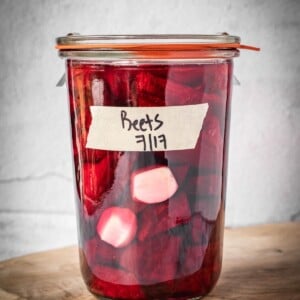
Equipment
- ¾ Quart Jar – 24-ounce (~750ml) Mason Jars
- Regular canning jar lids
Ingredients
- 2 cups Fresh un-chlorinated water – Filtered or spring water – 475ml
- 1 tbsp Kosher, pickling or sea salt – 17 grams
- 2-4 Garlic cloves
- 2-3 Beets – Peeled and cut into small chunks or slices
After Fermentation is Complete
- 1-2 tbsp White vinegar – Optional (to be used after fermentation is complete)
Instructions
- Prepare the Brine. In a large measuring cup or jug, combine the fresh water with salt. Mix well to dissolve the salt.
- Pack the jar. To your clean jar, add the garlic cloves and beet slices.
- Add weight. Apply the fermentation weight (if using), making sure that it sits below the rim of the jar.
- Pour brine. Carefully pour enough brine solution to cover the beets.
- Add fermentation lid. Apply the fermentation lid to the top of the jar.
- Ferment. Ferment the beets for at least 5 days away from direct sunlight. On day 5, taste the beets. If you want them to be tangier and sourer, replace the weight and lid and continue to ferment for a few more days. If you’re happy with the taste, remove the weight, and fermentation lid. Add the optional vinegar, apply a regular lid and place the ferment in the fridge.
Notes
- Beets: You can ferment any type of beet in this recipe. Red beets are of course widely available, but you’ll find golden beets and even candy cane beets in grocery stores and farmer’s markets these days. Choose medium beets.
- Salt: When fermenting, use kosher salt, pickling salt, or sea salt. Don’t use table salt as it has added iodine which can possibly hinder fermentation.
- Garlic: Another classic ingredient. I love using garlic in ferments but the choice is up to you.
- Vinegar (at end of ferment): This is completely optional. I like using neutral white distilled vinegar as it won’t affect the overall flavor but feel free to use another acid like white wine vinegar, apple cider vinegar, or even lemon juice or lime juice. Avoid using dark vinegar like balsamic or red wine. Adding vinegar is optional, but I recommend it as it helps balance out the flavor and will also help with preserving the pickles for longer in the fridge.
Nutrition
Nutrition information is automatically calculated, so should only be used as an approximation.
 Like this recipe? Rate & comment below!
Like this recipe? Rate & comment below!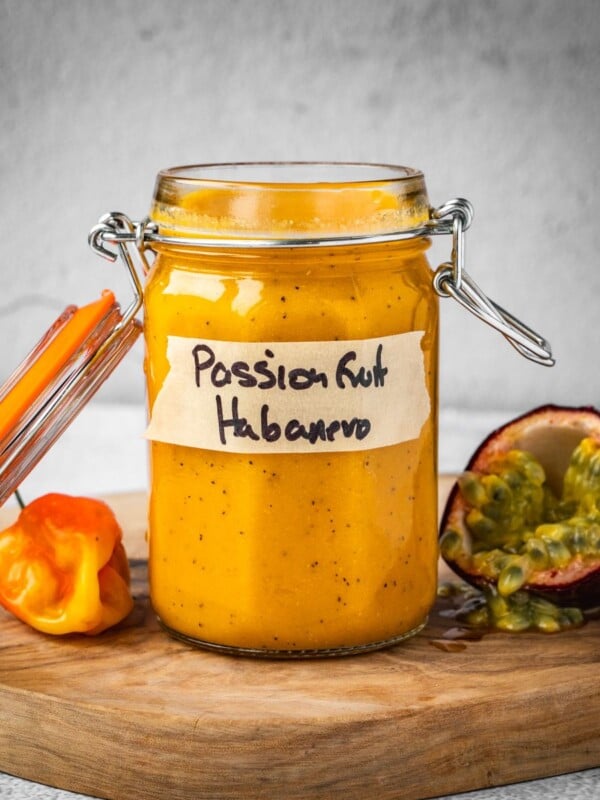
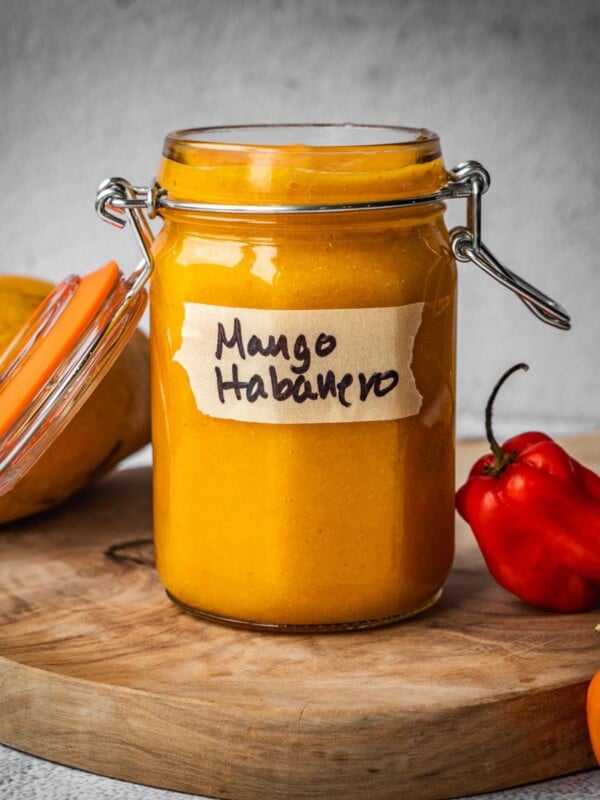
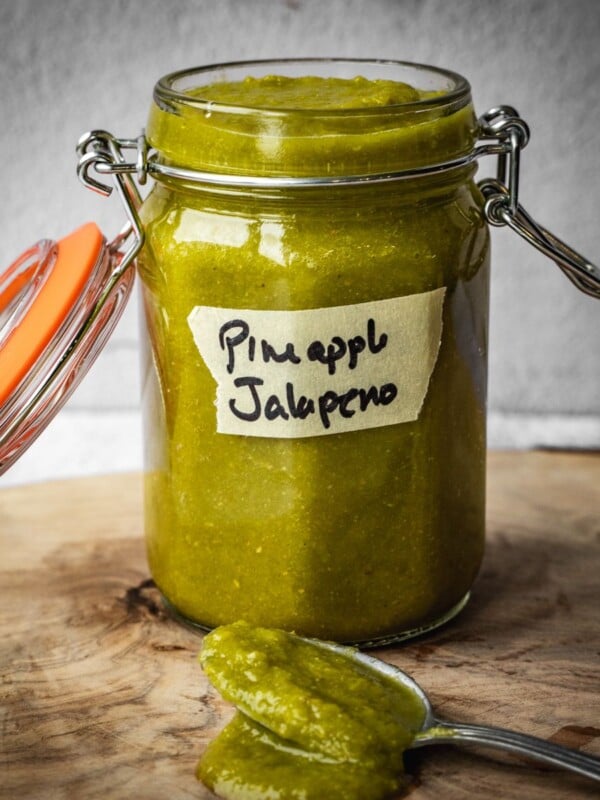

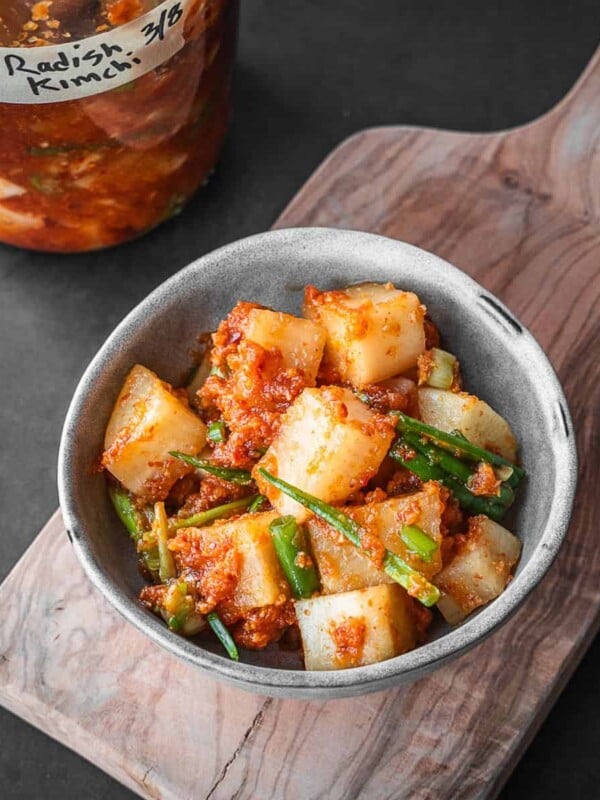
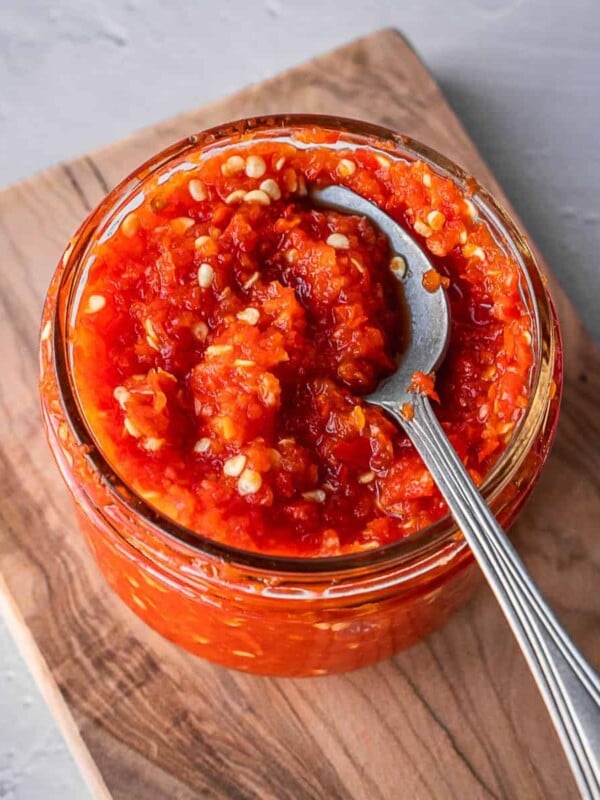
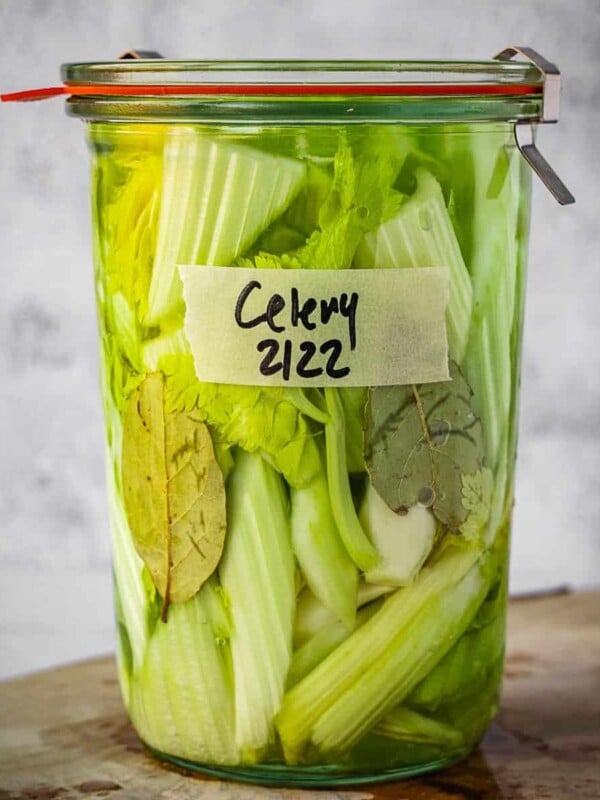
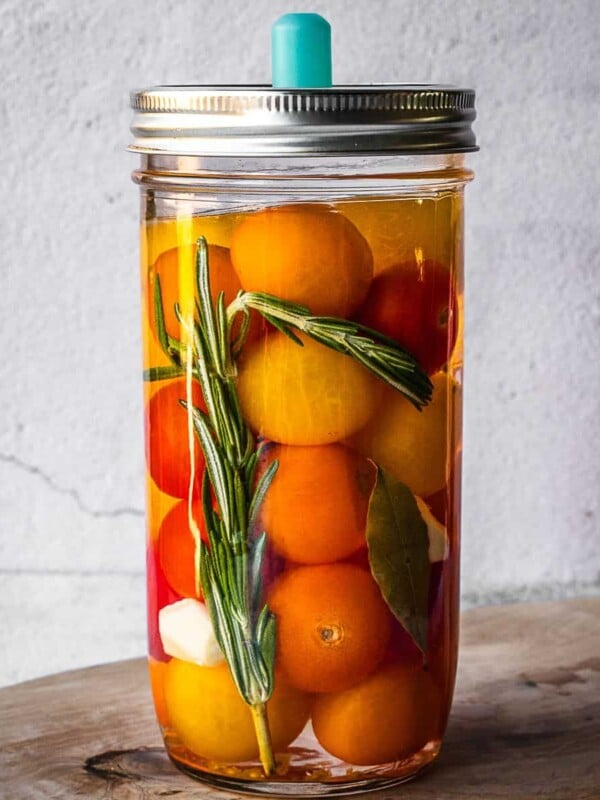








Great site and great recipe for fermented beets. Appreciate the detail and explanations in your recipes!!!
Thank you so much!
Hi! I am eager to try your fermented beets recipe! Do you cook your beets prior to fermenting them and how long of a shelf life will the final product have?
Thanks,
Kari
You don’t have to boil them like you would have to for pickled beets. Refer to the post above for storage information!